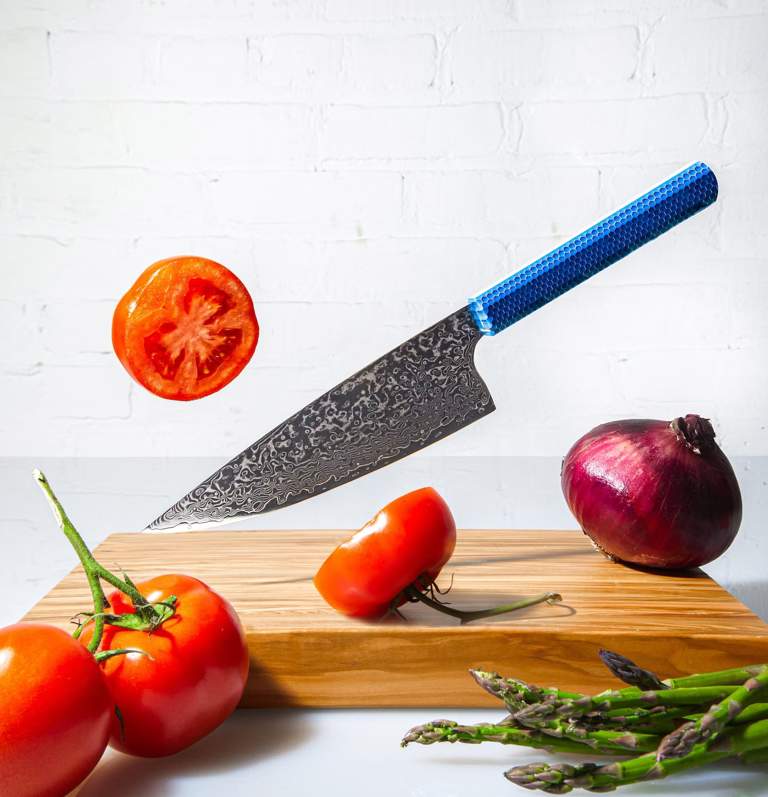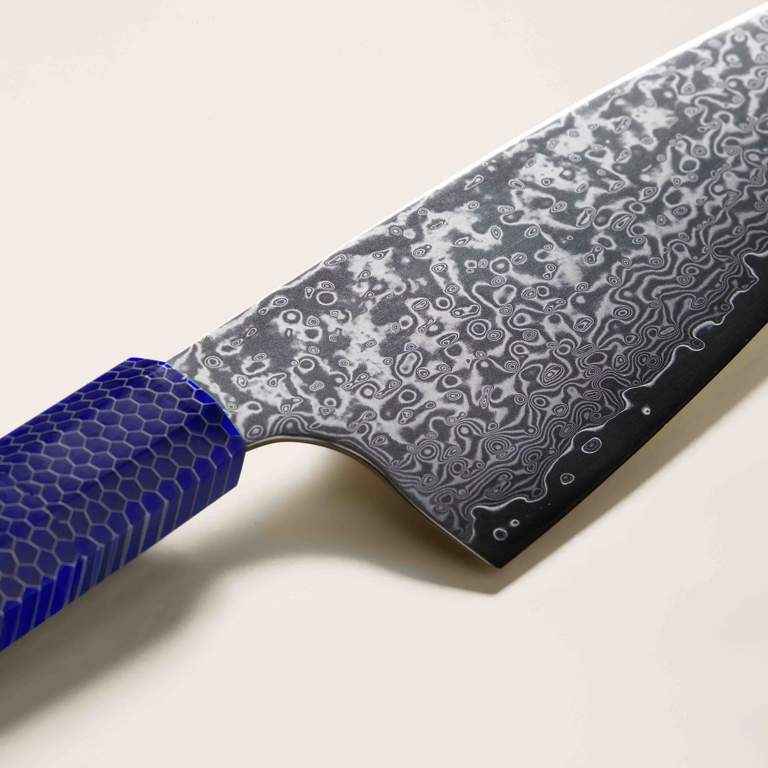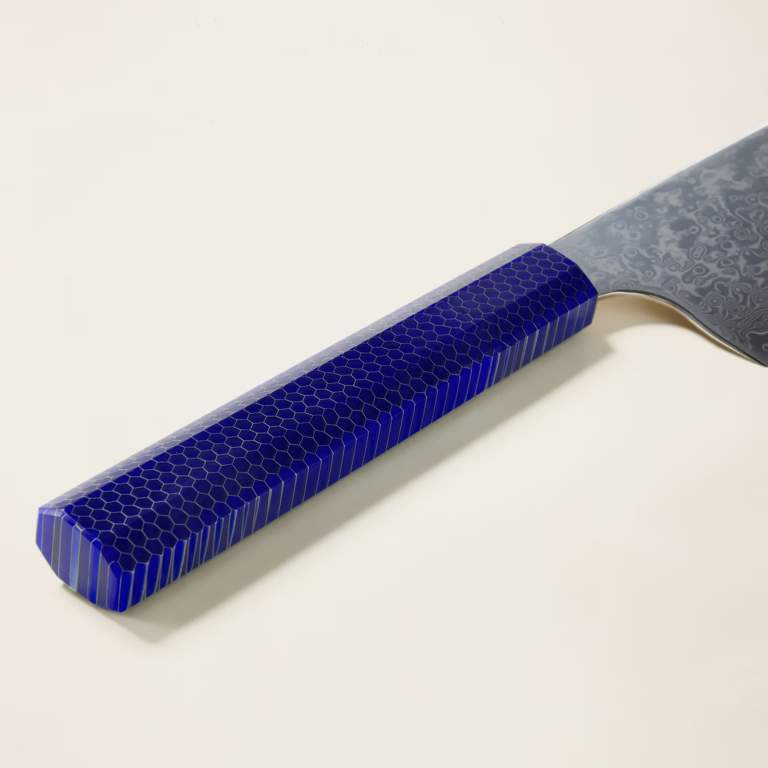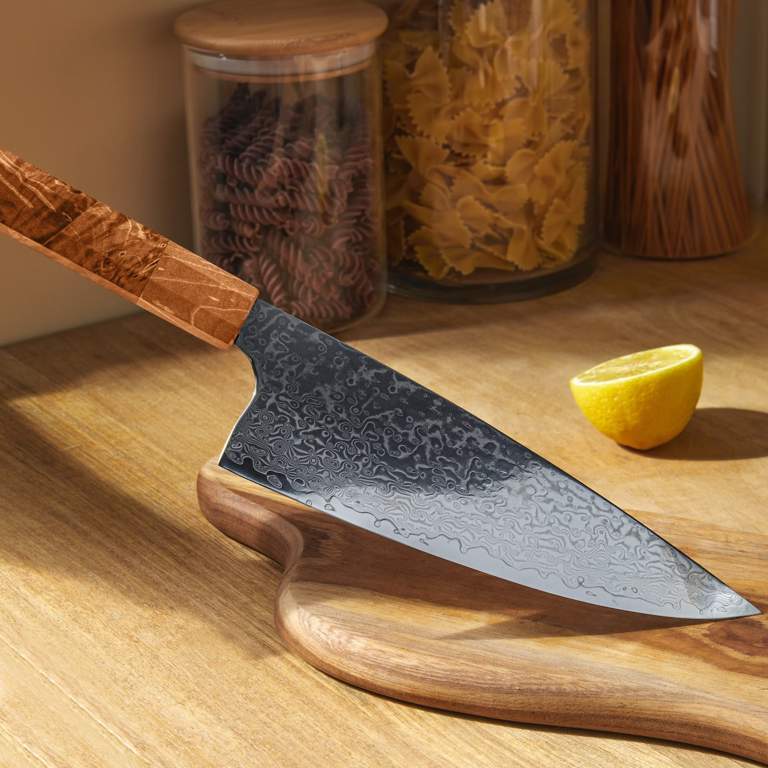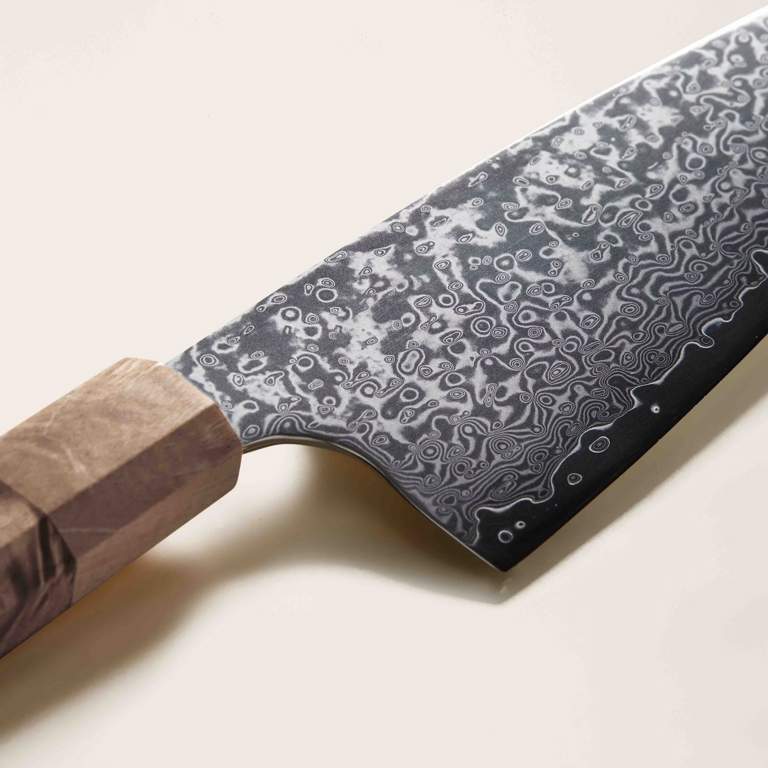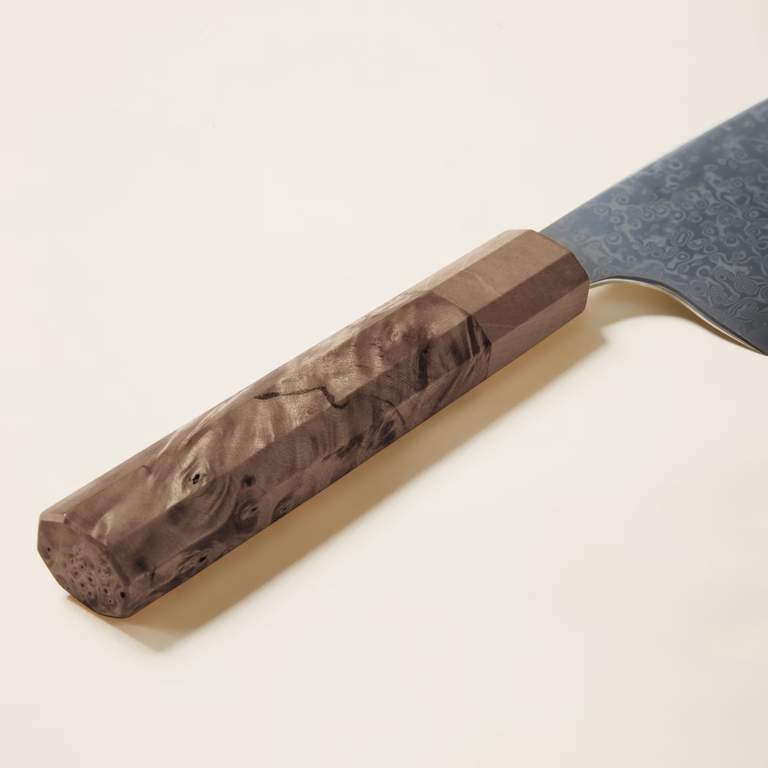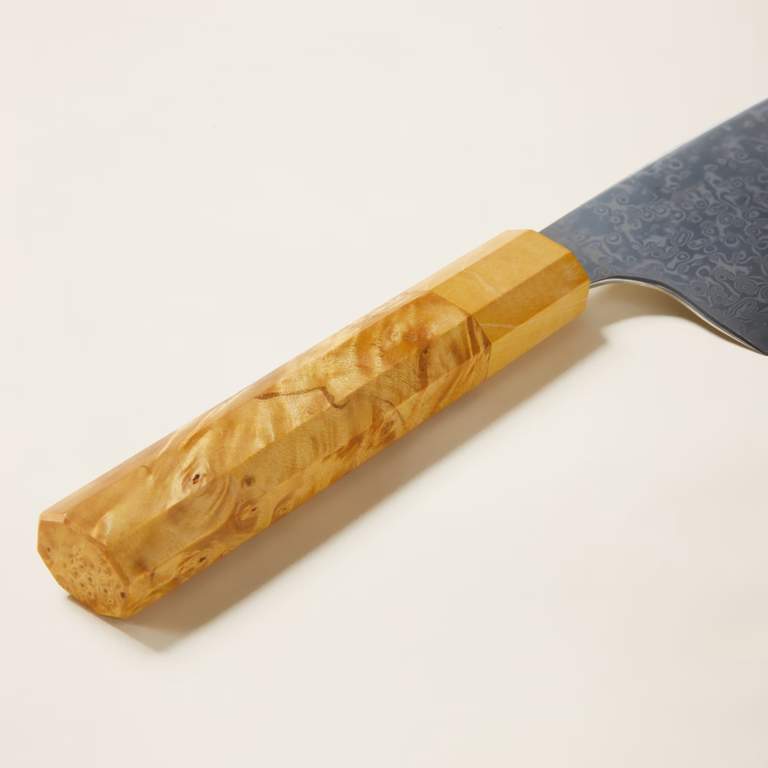Bestsellers for Japanese Knives
To perfect your blade's edge when sharpening Japanese knives, it is important to understand the different angles used in Japanese knife sharpening and how they affect the cutting performance. You will need essential tools such as sharpening stones and honing rods, and choosing the right ones is crucial. The sharpening process involves following detailed instructions and maintaining a consistent angle. Honing and polishing the blade are also important steps for maintaining sharpness. It is important to avoid common mistakes that can damage the blade and regularly test the sharpness of the knife. Proper care and maintenance, including storing and cleaning recommendations, can help prolong the sharpness of your Japanese knife. Italic offers a selection of knife sharpening products that can be used effectively.

on Italic.com
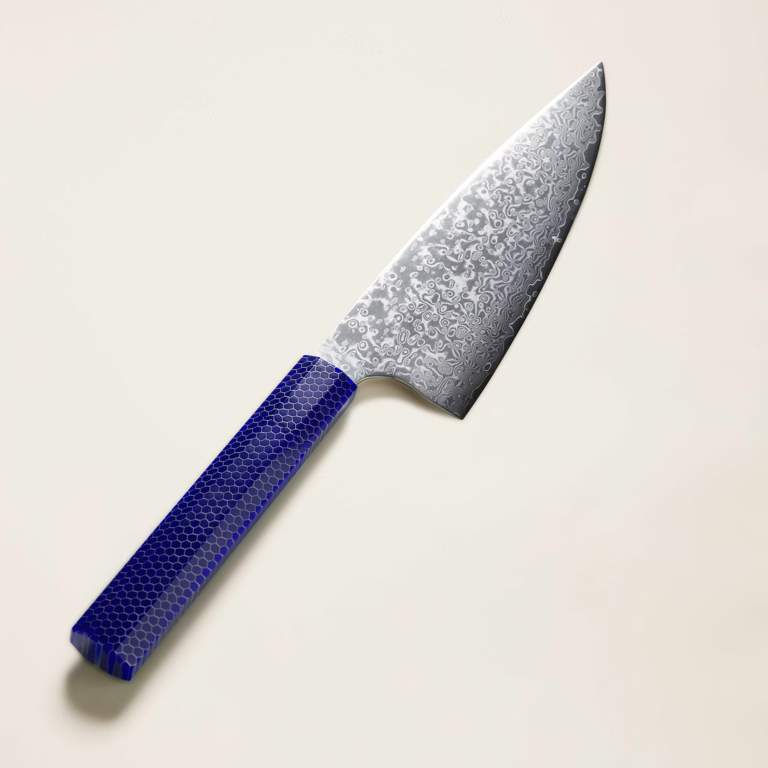
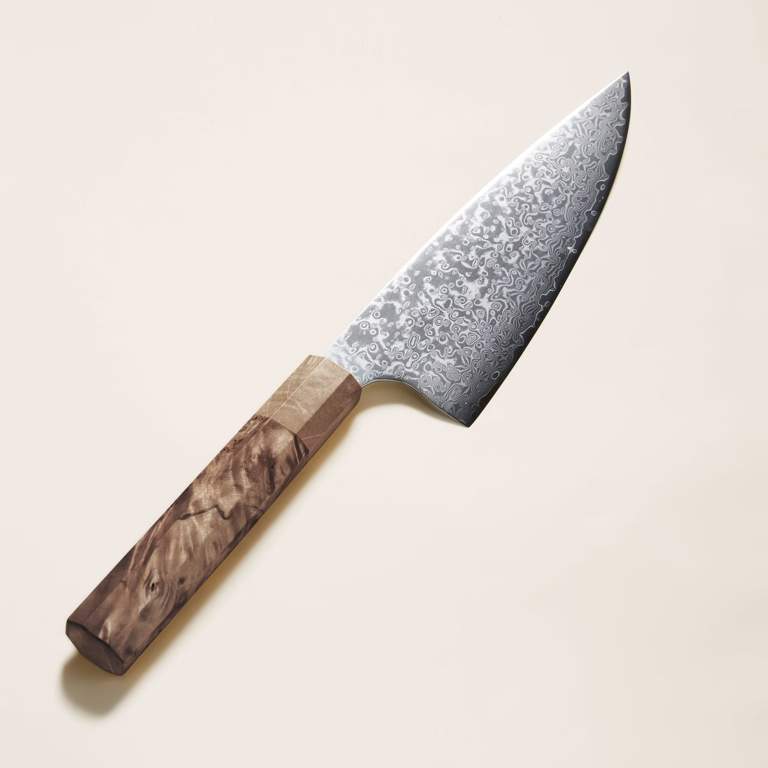
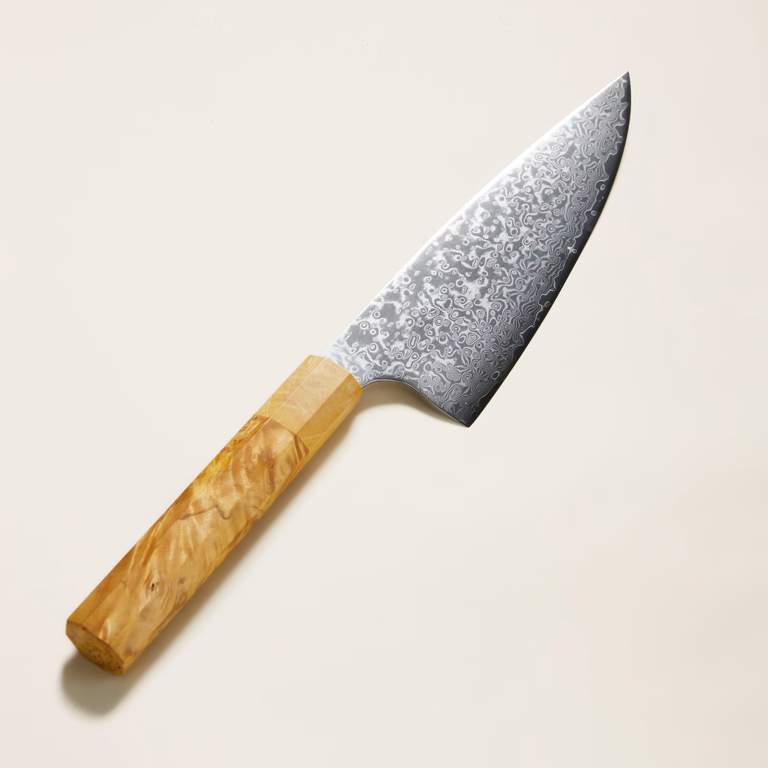
Understanding Knife Sharpening Angles
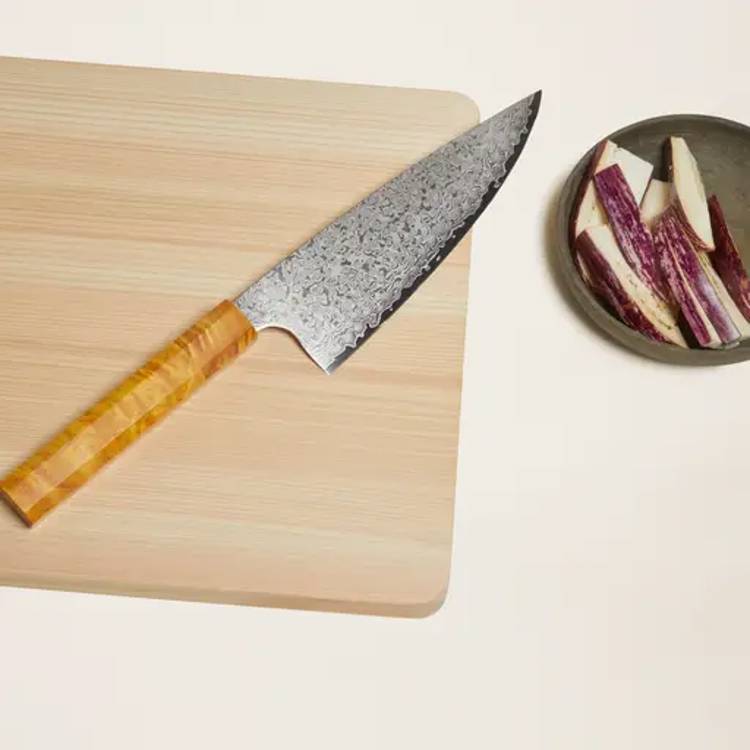
When it comes to Japanese knife sharpening, the angle at which you sharpen your blade plays a crucial role in determining its cutting performance. Japanese knives are known for their exceptional sharpness and precision, and understanding the right sharpening angles is key to achieving that level of perfection.
Different angles are used in Japanese knife sharpening, and each angle serves a specific purpose. The primary bevel angle, also known as the inclusive angle, refers to the angle formed between the blade's edge and the surface being sharpened. This angle can vary depending on the type of knife and its intended use.
For example, a typical chef's knife may have a primary bevel angle of around 15 to 20 degrees on each side. This relatively acute angle allows for precise slicing and dicing. On the other hand, a heavier-duty knife like a cleaver may have a larger primary bevel angle of around 25 degrees or more on each side, providing added durability for chopping through tougher ingredients.
In addition to the primary bevel angle, Japanese knives often feature a secondary bevel angle, also known as the micro-bevel or edge bevel. This is a smaller angle that is applied to the very edge of the blade during the sharpening process. The secondary bevel helps to refine and strengthen the cutting edge, improving its overall performance.
It's important to note that sharpening angles can vary between different types of Japanese knives and even between individual knife makers. Some knives may have asymmetrical bevels, with one side having a slightly different angle than the other. This is done intentionally to optimize cutting performance for right-handed or left-handed users.
To achieve the desired sharpening angles, it's essential to use the right tools and equipment. Sharpening stones are commonly used for Japanese knife sharpening, with different grits available for coarse grinding, fine honing, and polishing. Honing rods, also known as sharpening steels, can be used to maintain the edge between sharpenings.
When sharpening a Japanese knife, it's crucial to maintain a consistent angle throughout the process. This can be achieved by using guides or by developing a steady hand and a keen eye for maintaining the desired angle. Consistency is key to ensuring an even and symmetrical edge.
By understanding the importance of knife sharpening angles and using the right tools and techniques, you can achieve the exceptional sharpness and precision that Japanese knives are known for. Italic offers a selection of high-quality knife sharpening tools that can help you achieve professional-level results.
Tools and Equipment for Sharpening
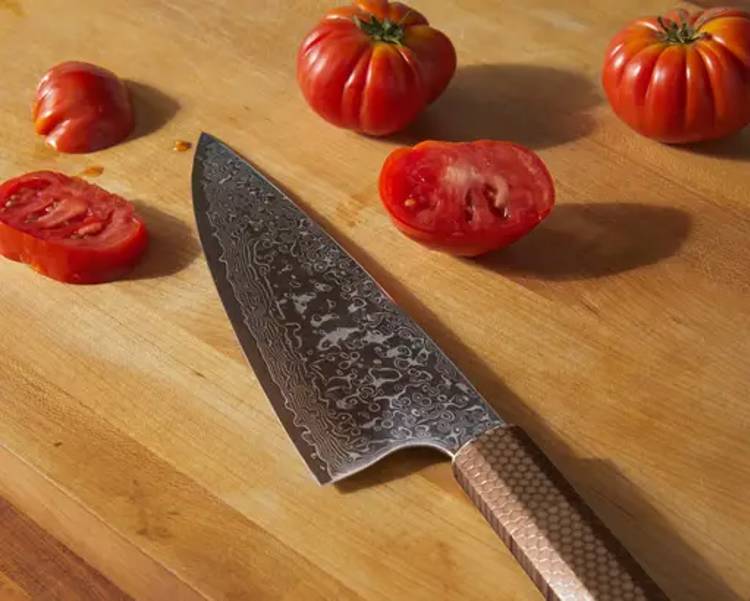
When it comes to sharpening Japanese knives, having the right tools and equipment is essential. Here is an overview of the essential tools you will need:
- Sharpening Stones: Sharpening stones, also known as whetstones, are the primary tool for sharpening Japanese knives. They come in different grits, ranging from coarse to fine. Coarse stones are used for repairing damaged or dull edges, while finer stones are used for refining and polishing the edge. It is recommended to have at least two sharpening stones with different grits for optimal results.
Honing Rods: Honing rods, also known as sharpening steels, are used for maintaining the sharpness of the knife between sharpenings. They are typically made of steel or ceramic and are used to realign the edge of the blade. Honing rods are especially useful for straightening out any minor bends or imperfections in the edge.
Angle Guides: Angle guides are tools that help you maintain a consistent sharpening angle while sharpening your knife. They attach to the spine of the knife and provide a reference point for keeping the blade at the correct angle. Using an angle guide ensures that you achieve a precise and uniform edge on your knife.
Sharpening Jigs: Sharpening jigs are devices that hold the knife in place and help you maintain a consistent angle while sharpening. They are particularly useful for beginners or those who struggle with holding a steady hand. Sharpening jigs can be adjusted to accommodate different blade angles and ensure accurate sharpening.
Lubricants: Lubricants, such as water or honing oil, are used to keep the sharpening stone lubricated during the sharpening process. This helps prevent friction and heat buildup, resulting in smoother and more effective sharpening. The type of lubricant you use will depend on the type of sharpening stone you have.
Cleaning Supplies: After sharpening your knife, it's important to clean and dry it properly. A soft cloth or towel can be used to wipe away any residue or debris from the blade. Additionally, you may want to use a brush or toothbrush to clean out any particles that may have accumulated in the knife's handle or pivot area.
Choosing the right tools and equipment for sharpening your Japanese knife is crucial for achieving optimal results. Italic offers a selection of high-quality sharpening tools that are designed specifically for Japanese knives. By using the right tools and following proper sharpening techniques, you can ensure that your knife stays sharp and performs at its best.
Step-by-Step Sharpening Process
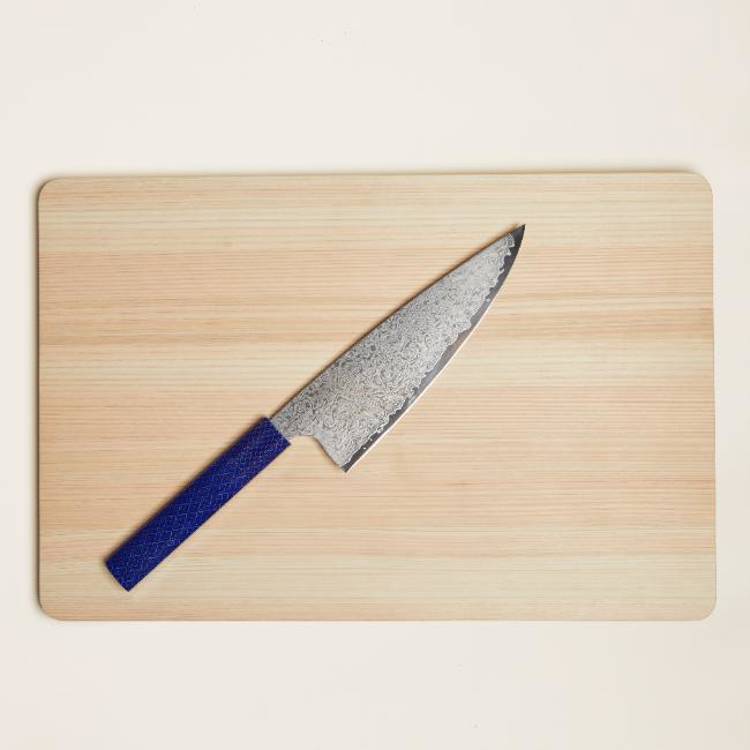
Sharpening a Japanese knife is a precise process that requires attention to detail. Here is a step-by-step guide to help you sharpen your knife effectively:
Gather the necessary tools: Before you begin, make sure you have the right tools for the job. This may include sharpening stones, honing rods, and a towel or cloth for cleaning.
Prepare the sharpening stone: If you are using a sharpening stone, soak it in water for the recommended amount of time to ensure it is properly hydrated.
Position the knife: Hold the knife firmly with one hand, placing your fingers on the blade's spine for stability. Ensure that the cutting edge is facing away from you.
Find the correct angle: Japanese knives typically have a specific sharpening angle, usually between 15 and 20 degrees. Use a sharpening guide or your own judgment to find the appropriate angle for your knife.
Start sharpening: Begin by placing the knife's edge against the sharpening stone at the chosen angle. Using light pressure, move the blade across the stone in a sweeping motion, maintaining a consistent angle throughout.
Alternate sides: After several strokes on one side of the blade, switch to the other side and repeat the process. This ensures even sharpening and prevents an uneven edge.
Check for burrs: As you sharpen, you may notice small metal burrs forming on the opposite side of the blade. To remove these burrs, gently swipe the blade along a honing rod or another fine-grit stone.
Test for sharpness: Once you are satisfied with the sharpness of your knife, carefully test it by slicing through a piece of paper or a soft food item. A sharp knife should cut effortlessly without tearing or crushing.
Hone and polish: To maintain the sharpness of your knife, regularly use a honing rod to realign the blade's edge. You can also use a polishing compound or leather strop to further refine the edge and enhance its cutting performance.
Clean and store: After sharpening, clean your knife with a damp cloth or towel to remove any metal particles or debris. Dry it thoroughly before storing it in a safe place, preferably in a knife block or sheath to protect the blade.
By following these step-by-step instructions, you can effectively sharpen your Japanese knife and ensure it remains sharp and ready for use.
Honing and Polishing the Blade
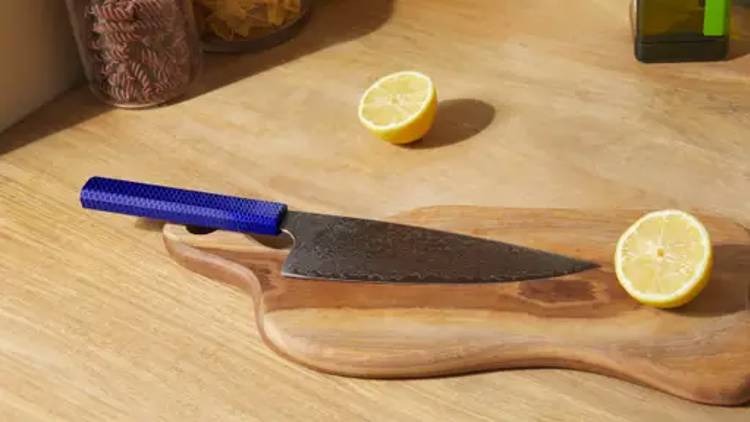
Honing and polishing are essential steps in maintaining the sharpness of your Japanese knife. Honing helps to realign the microscopic teeth on the edge of the blade, while polishing smooths out any imperfections and enhances the cutting performance.
Importance of honing and polishing for maintaining sharpness
Over time, the edge of a knife can become misaligned or develop small burrs that affect its cutting ability. Honing the blade with a honing rod helps to straighten and realign the edge, ensuring that it remains sharp and efficient. Regular honing can extend the time between sharpenings and keep your knife performing at its best.
Polishing the blade takes honing a step further by smoothing out any micro-serrations or imperfections on the edge. This process improves the knife's cutting performance, making it glide through ingredients effortlessly.
Recommended techniques and tools
To hone your Japanese knife, follow these steps:
Hold the honing rod vertically with its tip resting on a stable surface.
Hold the knife at a 15-20 degree angle against the rod, with the edge facing away from you.
Starting from the base of the blade, swipe the knife down along the length of the rod while maintaining a consistent angle.
Repeat this process on both sides of the blade, alternating between each side for an equal number of strokes.
For polishing, you can use a leather strop or a fine-grit sharpening stone. The leather strop should be charged with a polishing compound or abrasive paste to achieve optimal results. Simply run the knife's edge along the strop or stone in a controlled manner, making sure to maintain a consistent angle.
Common Mistakes to Avoid
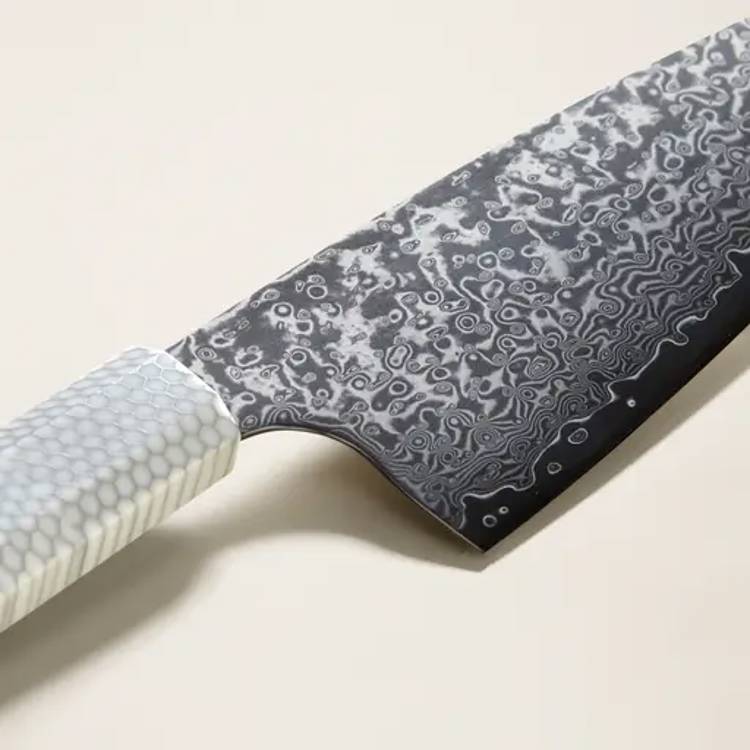
When sharpening Japanese knives, it's important to avoid common mistakes that can lead to damage or ineffective sharpening. Here are some pitfalls to watch out for:
Using the wrong angle: The angle at which you sharpen your knife is crucial. Using the wrong angle can result in an uneven edge or even damage the blade. Make sure to research and understand the recommended sharpening angle for your specific knife.
Applying too much pressure: Applying excessive pressure while sharpening can cause unnecessary wear on the blade and may result in an uneven edge. It's important to maintain a consistent and controlled pressure throughout the sharpening process.
Skipping grit levels: When using sharpening stones, it's essential to start with a coarse grit and gradually work your way up to finer grits. Skipping grit levels can result in an incomplete or less effective sharpening.
Neglecting honing and polishing: Honing and polishing are important steps in maintaining the sharpness of your knife. Neglecting these steps can lead to a dull edge, even after sharpening. Make sure to incorporate honing and polishing into your regular knife maintenance routine.
Not testing for sharpness: After sharpening your knife, it's crucial to test its sharpness before using it. Failing to do so may result in disappointment when you find that your knife is not as sharp as expected. Use various cutting tests, such as slicing through paper or vegetables, to assess the sharpness of your knife.
By avoiding these common mistakes and following proper sharpening techniques, you can ensure that your Japanese knife maintains its sharpness and performs at its best.
Testing and Assessing Sharpness
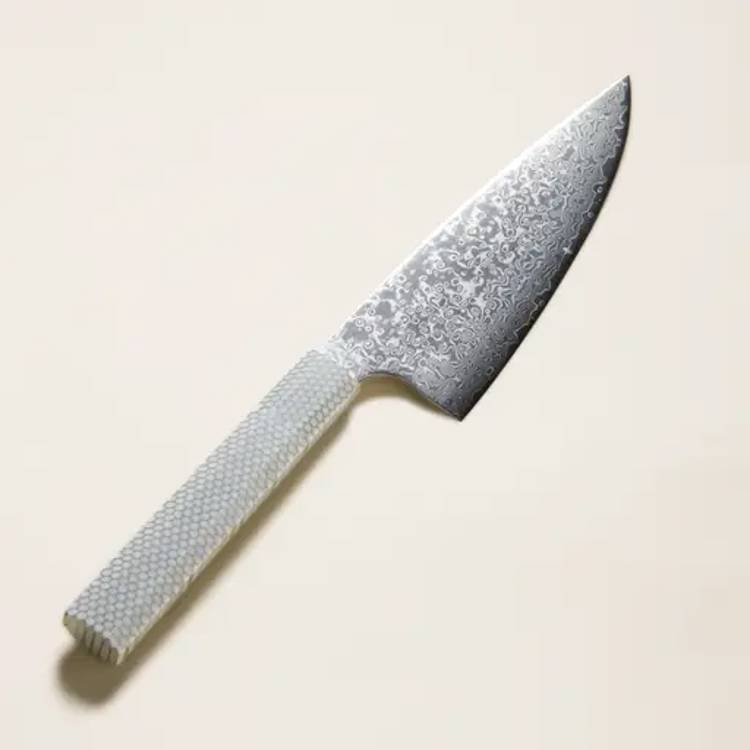
After sharpening your Japanese knife, it's important to test its sharpness to ensure optimal cutting performance. Here are some methods you can use to assess the sharpness of your knife:
Paper Test: Take a piece of paper and hold it with one hand. With the other hand, gently draw the knife across the paper at a slight angle. A sharp knife should effortlessly slice through the paper with minimal resistance. If the knife tears or struggles to cut through, it may need further sharpening.
Tomato Test: Grab a ripe tomato and hold it steady on a cutting board. Carefully bring the knife down onto the tomato, applying minimal pressure. A sharp knife will effortlessly slice through the tomato, creating clean, smooth cuts. If the knife crushes or smashes the tomato instead of cleanly slicing through, it may need to be sharpened.
Vegetable Test: Use your knife to cut through various vegetables, such as carrots or onions. A sharp knife should easily glide through the vegetables, creating clean and precise cuts. If you notice that the knife is struggling or requires excessive force to cut through, it may be time for sharpening.
Fingernail Test: Gently run your thumb along the blade's edge, perpendicular to the cutting edge. Be cautious not to apply too much pressure to avoid injury. A sharp knife will catch on your thumbnail and leave a slight indentation without slipping off. If the blade feels dull or slides smoothly without catching, it may need sharpening.
Remember that these tests should be performed with caution to avoid accidents or injuries. Always handle knives safely and use appropriate cutting surfaces.
If you find that your knife is not as sharp as desired, you can consider re-sharpening it using the appropriate tools and techniques. Italic offers a selection of knife sharpening products that can help you maintain the sharpness of your Japanese knife effectively.
Care and Maintenance Tips
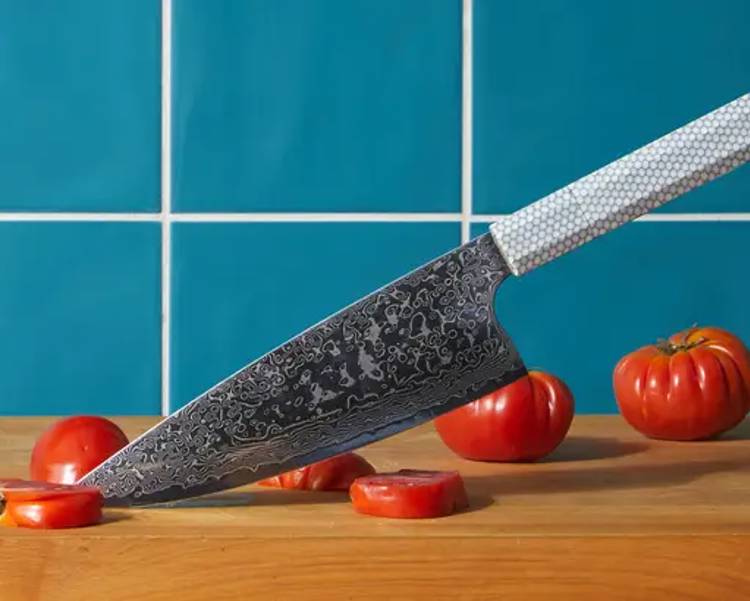
Proper care and maintenance are essential for keeping your Japanese knife in optimal condition and prolonging its sharpness. Here are some tips to help you take care of your knife:
Hand Washing: Always hand wash your Japanese knife with warm water and mild dish soap immediately after use. Avoid using abrasive sponges or harsh cleaning agents, as they can damage the blade.
Drying: Thoroughly dry your knife with a clean towel after washing to prevent moisture from causing rust or corrosion. Pay special attention to drying the blade and handle.
Storage: Store your Japanese knife in a knife block, sheath, or on a magnetic strip to protect the blade and prevent accidents. Avoid storing it in a drawer where it can come into contact with other utensils and potentially get damaged.
Sharpening: Regularly sharpen your knife to maintain its sharpness. Use high-quality sharpening stones or honing rods specifically designed for Japanese knives. Follow the manufacturer's instructions or seek professional guidance if you're unsure about the sharpening process.
Honing: In addition to sharpening, use a honing rod to realign the edge of the blade between sharpenings. This helps maintain the knife's cutting performance and prolongs its sharpness.
Avoid Hard Surfaces: Avoid cutting on hard surfaces like glass, ceramic plates, or marble countertops, as they can dull or chip the blade. Instead, use a cutting board made of wood or soft plastic to protect the knife's edge.
Avoid Bones and Frozen Foods: Japanese knives are designed for precision slicing and should not be used for heavy-duty tasks like cutting through bones or frozen foods. These tasks can damage the blade and compromise its sharpness.
Regular Inspections: Regularly inspect your knife for any signs of damage, such as chips, cracks, or loose handles. If you notice any issues, stop using the knife and seek professional assistance for repairs.
Professional Maintenance: Consider having your Japanese knife professionally maintained and sharpened by a reputable knife sharpener or cutlery shop. They have the expertise and specialized equipment to ensure your knife is properly cared for.
By following these care and maintenance tips, you can enjoy the longevity and exceptional performance of your Japanese knife.
Italic's Knife Sharpening Products
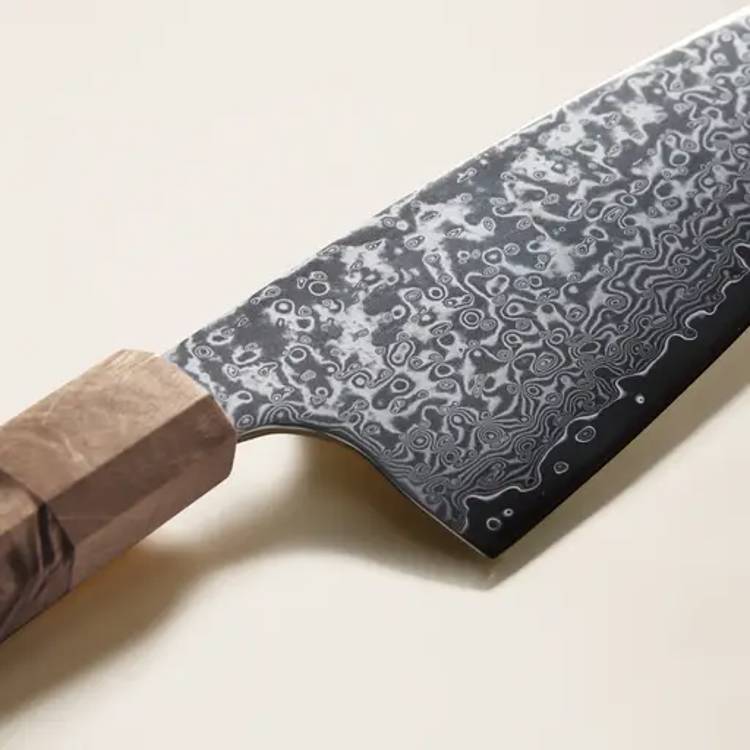
Italic offers a selection of high-quality knife sharpening tools to help you maintain the sharpness of your Japanese knives. Here are some of the products available:
Knife Sharpening Stones: Italic offers a range of sharpening stones with different grit levels to suit your needs. These stones are made from high-quality materials and provide excellent sharpening performance.
Honing Rods: Honing rods are essential for maintaining the edge of your knife between sharpenings. Italic offers honing rods that are designed to be easy to use and effective in keeping your knife sharp.
Sharpening Guides: If you're new to knife sharpening or want to ensure a consistent angle while sharpening, Italic's sharpening guides can be a great tool. These guides help you maintain the correct angle while sharpening, resulting in a precise and uniform edge.
Sharpening Systems: For those who prefer a more comprehensive approach to knife sharpening, Italic offers sharpening systems that include multiple tools and accessories. These systems provide everything you need to achieve professional-level results.
When using Italic's knife sharpening products, it's important to follow the provided instructions and guidelines for optimal results. Proper technique and care will ensure that your Japanese knives stay sharp and perform at their best.
By choosing Italic's knife sharpening products and following their usage tips, you can easily maintain the sharpness of your Japanese knives and enjoy precise cutting performance for years to come.
Italic Buying Guide

Japanese knives are the epitome of precision and craftsmanship. With their razor-sharp blades and ergonomic designs, these knives offer unparalleled cutting performance. When choosing a Japanese knife, there are several factors to consider.
First and foremost, blade material is crucial. Japanese knives are typically made from high-quality stainless steel, such as VG10. This type of steel offers excellent edge retention and corrosion resistance. Additionally, consider the layer count of the blade. More layers generally indicate better strength and durability.
Next, consider the blade length. Japanese knives come in various sizes, ranging from small utility knives to larger chef's knives. The right blade length depends on your personal preference and the tasks you frequently perform in the kitchen.
Another important factor to consider is the handle. Japanese knives often feature unique hexagonal handles that provide a comfortable grip and excellent control. Look for a handle material that suits your preferences, whether it's wood, resin, or another material.
Lastly, consider the brand reputation and customer reviews. Japanese knife brands with a long history and positive feedback from customers are more likely to produce high-quality knives.
In conclusion, when purchasing a Japanese knife, prioritize blade material, layer count, blade length, handle design, and brand reputation. By considering these factors, you can find the perfect Japanese knife that will enhance your culinary skills and bring joy to your cooking experience. Here are some products we recommend.
Kumo Japanese VG10 Gyuto Chef Knife - Blue Honeycomb Resin
The Kumo Japanese VG10 Gyuto Chef Knife is a pinnacle of modern steel, crafted from 67 layers of pure Damascus Japanese VG10 stainless steel for superior edge retention and corrosion resistance. Its 61 HRC score ensures the knife can be used for a long time without needing to be sharpened. Its curved blade provides universal utility and its part of the limited Kumo collection which features handcrafted knives with cutting boards crafted from medium-hard Japanese Hinoki Cypress, making it the perfect combination of form and function.
- Superior quality material - The Kumo Japanese VG10 Gyuto Chef Knife is made from high-grade VG10 Japanese steel, which is known for its exceptional durability and sharpness.
- Elegant design - The knife features a unique blue honeycomb resin handle, which adds elegance and sophistication to any kitchen.
- Versatility - This Gyuto Chef Knife is perfect for slicing, dicing, and chopping a wide variety of foods, making it a versatile addition to any kitchen.
- Comfortable grip - Many users have praised the comfortable grip offered by the knife's specially designed handle, allowing for precise and effortless cutting.
- Long-lasting sharpness - The VG10 steel ensures that the knife retains its sharpness for an extended period, reducing the need for frequent sharpening.
- Easy maintenance - Users have mentioned that the knife is easy to clean and maintain, making it a practical choice for everyday use.
- Great value for money - Despite its premium features and quality construction, the Kumo Japanese VG10 Gyuto Chef Knife is reasonably priced, offering great value for money.
Kumo Japanese VG10 Gyuto Chef Knife - Brown Stabilized Maple
The Kumo Japanese VG10 Gyuto Chef Knife is a unique and luxurious piece of kitchenware, featuring handcrafted Damascus steel for superior edge retention, corrosion resistance, and durability. Its 61 HRC score makes it perfect for long-lasting use and its universal utility means it can easily slice, chop, and dice any ingredients you need. Finally, this chef's knife is part of the exclusive Kumo Collection which combines both beauty and function.
- Sharpness: Many users rave about the remarkable sharpness of the Kumo Japanese VG10 Gyuto Chef Knife, allowing for precise and effortless cuts.
- Quality Material: The knife is made from VG10 Japanese steel, which is praised for its durability, rust resistance, and edge retention.
- Handle Comfort: The Brown Stabilized Maple handle provides a comfortable grip, enhancing control and minimizing hand fatigue during prolonged use.
- Versatility: This knife is highly versatile, capable of handling a wide range of kitchen tasks from chopping vegetables to slicing meat.
- Aesthetics: Users often compliment the beautiful design of the knife. Its unique pattern and elegant brown stabilized maple handle make it a stylish addition to any kitchen.
- Balance: The knife has excellent balance, making it easy to control and aiding in precision cutting.
- Value for Money: Despite its high-end features, the Kumo Japanese VG10 Gyuto Chef Knife is considered great value for money by many users.
Kumo Japanese VG10 Gyuto Chef Knife - Natural Birch Burl
The Kumo Japanese VG10 Gyuto Chef Knife is a pinnacle of modern steel, made with 67 layers of pure Damascus Japanese VG10 stainless steel for superior edge retention and corrosion resistance. It features a Rockwell Rating of 61 HRC and universal utility, making it ideal for cutting any vegetables, meats, or breads. It is part of the Kumo Collection which includes handcrafted knives and cutting boards crafted from medium-hard Japanese Hinoki Cypress.
- Exceptional Sharpness: Many reviews rave about the Kumo Japanese VG10 Gyuto Chef Knife's superior sharpness. The VG10 steel provides an exceptionally sharp edge that cuts through food effortlessly.
- High-Quality Material: The knife is made from VG10 steel, a high-quality stainless steel that is rust-resistant, durable, and maintains its sharpness for longer periods of time.
- Comfortable Grip: Users appreciate the comfortable grip of the knife. The handle, made from natural birch burl, is not only aesthetically pleasing but also ergonomic and easy to hold.
- Versatility: This chef knife is praised for its versatility. It's perfect for a wide range of kitchen tasks, from slicing and dicing vegetables to cutting meat.
- Beautiful Design: Many users love the beautiful design of the Kumo Japanese VG10 Gyuto Chef Knife. The natural birch burl handle and polished steel blade give it a sleek, sophisticated look.
- Balanced Weight: Users note that this knife has a well-balanced weight, which makes it comfortable to use for long periods of cooking time.
- Excellent Value for Money: Despite its high-end materials and craftsmanship, users find this knife to be excellent value for money. Its performance rivals that of much more expensive kitchen knives.



